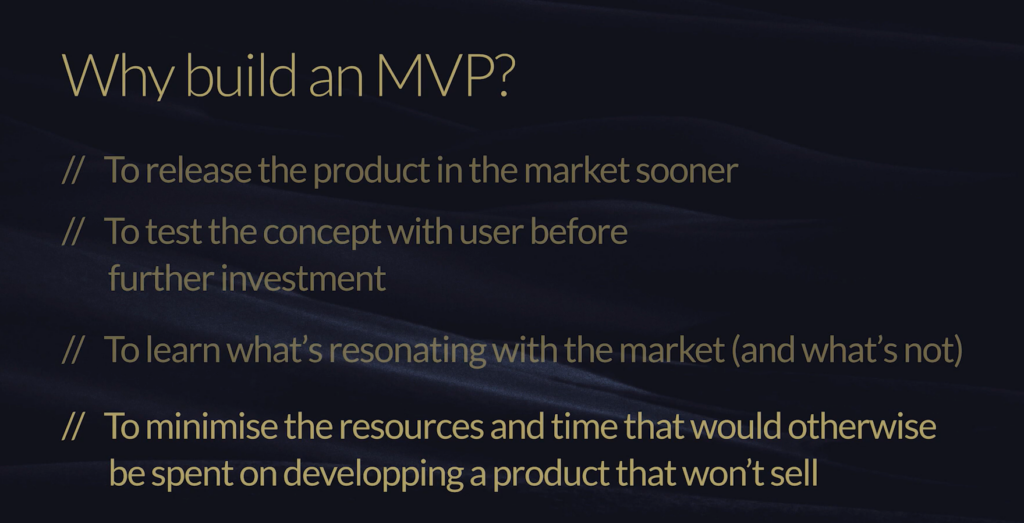MVP stands for Minimum Viable Product, a term derived from the principles of Lean Startup. It revolves around the idea of validating a product concept by engaging customers during the initial stages of development. An MVP is designed with essential features that make it functional, and it relies on feedback from early adopters to drive continuous improvement.
Understanding the Concept of Minimum Viable Product (MVP)
The concept of Minimum Viable Product, commonly known as MVP, originates from the Lean Startup methodology, which aims to establish businesses and products with minimal time and resources. An MVP serves as a rapid and cost-effective means to assess the viability of a proposal, allowing businesses to validate ideas without incurring significant costs or risks.
The Lean Startup methodology is rooted in the principles of lean manufacturing and lean software development, emphasizing the reduction of waste and the pursuit of efficiency. It introduces innovative concepts such as validated learning, which involves assessing consumer demand through early product releases. This approach diverges from the traditional model of investing in fully developed products and waiting for demand to grow. The method was developed by Eric Ries, an American entrepreneur and the founder/CEO of the Long-Term Stock Exchange (LTSE). His book, “The Lean Startup,” provides a comprehensive framework for implementing this methodology.

Examples of a Minimal Viable Product (MVP)
Minimum Viable Product, is defined by each organization according to their product’s needs. When considering the MVP approach for product development, it is valuable to examine renowned case studies and assess them in the context of modern iterations. While these cases may not have explicitly implemented the Lean Startup or MVP methodology, they successfully generated demand by introducing a basic solution to the market and allowing user adoption to guide the evolution of product features.
Undoubtedly, many of you are familiar with The Social Network or at least have heard of it, as it offers a portrayal of the origins of Facebook, albeit not entirely accurate. Nevertheless, have you ever had the opportunity to see the initial user interface (UI) of Facebook?

Comparing the original uses of Facebook (or thefacebook) with its current extensive range of features serves as a compelling illustration of how an MVP can effectively generate demand, particularly viral demand, and utilize it to achieve rapid growth.
Dropbox
Dropbox is a popular cloud storage and file sharing platform that offers various features to enhance productivity and collaboration. When developing an MVP (Minimum Viable Product) for a Dropbox-like service, it is important to focus on essential functionalities while keeping the scope minimal.
The core features for an MVP of a Dropbox-like service:
| Core Features | Description |
|---|---|
| File Storage and Organization | Provides a reliable and secure storage system for users to upload and store files. Includes basic folder organization and file search capabilities. |
| File Sharing and Collaboration | Enables users to share files with others through shareable links or invitations. Supports basic permission settings for collaboration and access control. |
| Cross-Platform Access and Syncing | Allows users to access their files from various devices and ensures seamless syncing of changes. Supports desktop, web, and mobile platforms. |
| Version Control and Recovery | Implements version control features to track file revisions and restore previous versions. Offers basic functionality for reverting to earlier file versions. |
| Security and Privacy | Incorporates basic security measures like file encryption during transit and storage to safeguard user data. |
Dropbox took an innovative approach to developing their file-sharing solution. Instead of diving into full-fledged development without knowing their potential customer base, they created an explainer video as their MVP. By validating the need for the product, Dropbox confirmed that investing in the infrastructure, apps, and subsequent developments was indeed worthwhile.
Spotify
Spotify stands out as a remarkable example of an MVP, with its initial product iteration solely centered around music streaming. By resisting the temptation to incorporate numerous enticing features before its release, Spotify concentrated on developing a desktop app and implemented a beta testing approach. This strategic move effectively validated the market’s desire for such a product. Spotify then capitalized on these early successes to transform into the feature-rich platform it is renowned for today.
Challenges commonly encountered with the MVP approach
These case studies highlight the diverse possibilities for an MVP when executed correctly. However, it is crucial to acknowledge the consequences of getting it wrong. Examining these MVPs and similar instances reveals their adeptness at striking the ideal balance between insufficient development and excessive investment (the goldilocks principle). Furthermore, their readiness to respond promptly to identified demand and satisfy it through continuous releases played a pivotal role in their success.
The term MVP should not be casually used or misapplied to any project. It is crucial to avoid the misconception that an MVP is inherently of lower quality compared to the final product. Assuming that you can compensate for a subpar experience in the initial feature set and retain consumer interest solely by promising future enhancements is a mistake. Ultimately, regardless of labeling it as an MVP or not, a deficient product remains just that—a substandard offering.
The crucial step in launching your product is to validate your hypothesis and gather sufficient data to assess the associated risks. Similar to the success story of Dropbox, one effective approach to an MVP is to engage the market and gauge their interest in your idea. This approach offers a valuable means of controlling investments, where demand metrics can guide decision-making before committing significant resources. Undoubtedly, there is a strong case for developing an MVP to measure interest, as exemplified by the accomplishments of Facebook, Spotify, and numerous others. However, the key lesson learned is to avoid high commercial risk until you have validated that your product has a sufficient number of potential buyers to ensure commercial viability.
Caution should be exercised when using the term MVP in a strictly waterfall project, particularly when there has already been significant investment made towards achieving the desired end product. Although the initial iteration or release may align with the principles of an MVP by incorporating minimal features, the substantial financial commitment already made to the project leaves no room for failure. This presents a challenging situation, but it doesn’t necessarily mean that an MVP-like approach cannot be adopted. It is important to be mindful that the emphasis should not solely be on the “Minimal” aspect of an MVP, but also on ensuring its “Viable” nature.
Waterfall projects often face the risk of relying solely on validation from internal project team members to determine the potential adoption of features. Instead of exclusively planning and validating requirements internally through traditional methods, it is worth considering a review of the project methodology and exploring ways to make it more iterative or rolling wave, rather than strictly following the waterfall approach. While adopting Agile is a viable option, it carries a considerable degree of risk if implemented midway through the project. Therefore, careful consideration and early adoption are essential to mitigate potential challenges.
Getting started
When embarking on the MVP approach, it is important to recognize that having a limited budget should not impede your ability to experiment and generate ideas. Before diving into the development of an MVP, it is crucial to assess your methodology and processes to ensure they are capable of aligning with and supporting your desired outcomes. This includes incorporating early hypothesis testing, identifying demand, and gathering comprehensive user information regarding their desires and needs. By considering these factors, you can lay a solid foundation for a successful MVP implementation.
Primary stages involved in developing an MVP include:
- Validate the market need: Begin by understanding the specific market segment you are targeting, such as college students, file sharers, or music lovers, as illustrated in our case studies. It is crucial to validate the actual demand in the market;
- Define the value proposition: Instead of building a product first and then attempting to attribute value to it afterward, it is essential to clearly understand and define the value your product will provide. Let the definition of value guide the development of your MVP, rather than the other way around. This approach minimizes the risk of struggling to sell a product that lacks perceived value;
- Create user journeys, not process maps: Focus on developing user journeys that mirror real-life scenarios. By doing so, you can identify potential pain points and areas of friction for users. User journeys are easy to comprehend and can be utilized later in the process for validation with actual users;
- Determine the features and design for the MVP: Utilize prototyping or beta testing, if necessary, to aid in prioritizing and validating which features are most suitable for your target market. This step ensures that the MVP incorporates the essential functionalities needed to address the identified market need;
- Build the MVP and iterate based on user feedback: Once the MVP is developed, gather feedback from users and iterate accordingly. User-generated feedback will help you refine and enhance the product, ensuring that subsequent iterations are aligned with the users’ needs and expectations. This iterative process allows for scalable growth and improvement of the product.
